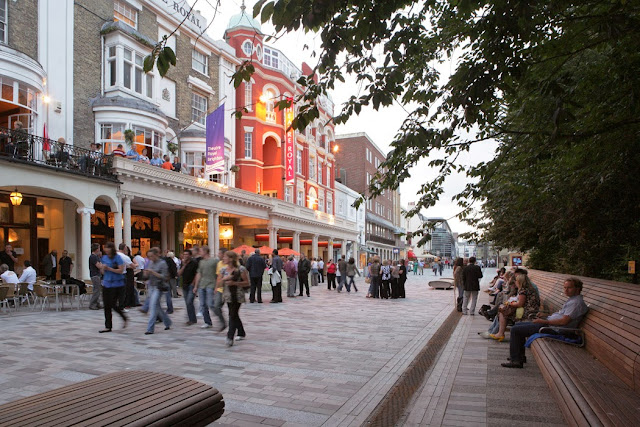We had read about the (local to us)
Sussex Prairie Gardens and
finally got round to visiting a few weeks ago on a beautiful sunny afternoon.
The garden is approximately 6 acres and surrounded by mature
boundary trees. The owners have created a landscape which features predominately
perennial planting in a ‘series of interlocking arcs of large planted borders
in a naturalistic style’. A series of secondary access paths allow visitors to
walk amongst the planting areas, providing an opportunity to enjoy a ‘close
up’ experience.
There is some tree and hedge structural planting within the garden
however it has yet to reach maturity and therefore the overall impression is of
a fairly flat, open space. There are a couple of small ponds which have created
an opportunity for different plant communities as well as specialist insects (dragon
/ damsel flies).
Although we thoroughly enjoyed our visit I feel the garden
may have benefitted from a more ‘drift’ or 'intermingling' style of planting – the planting has
been laid out in a predominately ‘block' style which I felt detracted from the intended
naturalistic design aim. That said, the owners also use the plants as stock to
supply their nursery and this requirement has perhaps influenced the planting
layout.
The garden is not open during the winter which is a shame as
the colours and forms on a frosty, sunny morning with a low winter sun must be stunning.
Each February, the owners wait for the wind to be in the right direction and
then burn off all the vegetation in order to clear the garden to make way for
new growth, unfortunately health and safety obligations
preclude this event from being attended by the public.
Overall the mass of colour and movement make
for a wonderful effect and on the afternoon of our visit the gardens were awash
with insects and butterflies. A small nursery area offered very competitively
priced plants and the tea and home-made cakes were terrific. All in all well worth a visit and the owners
are to be congratulated on their vision and achievement.



















